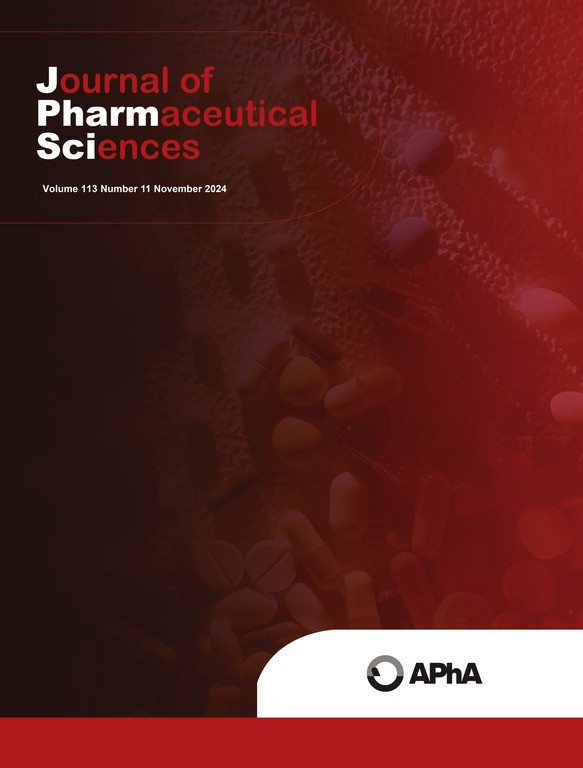肠内碳酸氢盐缓冲液中可电离药物溶出的新模型。
IF 3.7
3区 医学
Q2 CHEMISTRY, MEDICINAL
引用次数: 0
摘要
为了在体内达到预期的效果,口服的药物必须首先溶解在胃肠道中。由于大多数市售药物具有酸性和/或碱性基团,因此电离和肠道缓冲是充分溶解和相应的生物利用度的重要因素。因此,这项工作的目的是建立一个溶解模型,在处理肠道碳酸氢盐缓冲液时适当地考虑到这些因素。基于溶解过程中瞬间达到稳态,除H2CO3和CO2之间的相互转化外所有反应均处于平衡状态,以及反应物在厚度为h的边界层上扩散的假设,建立了一套微分代数方程组,并利用Wolfram Mathematica进行了数值求解。该模型对来自不同文献来源的通量值提供了非常好的预测,同时与以前的模型相比,该模型涉及的简化假设较少,从而提高了其准确性,使其成为模拟肠道介质溶解的合适且有前景的方法。本文章由计算机程序翻译,如有差异,请以英文原文为准。
A new model for ionizable drug dissolution in intestinal bicarbonate buffer
In order to achieve the desired effect in vivo, drugs taken orally must first be dissolved in the gastrointestinal tract. With the majority of the commercially available drugs having acidic and/or basic groups, ionization and intestinal buffering are important factors underlying adequate dissolution and, accordingly, bioavailability. The aim of this work was therefore to develop a dissolution model that properly takes these factors into account when dealing with the intestinal bicarbonate buffer. Based on the assumptions that, during dissolution, steady state is reached instantaneously, all the reactions are at equilibrium save for the interconversion between H2CO3 and CO2, and diffusion of the reactants occurs over a boundary layer of a defined thickness h, a system of differential algebraic equations was developed and solved numerically using Wolfram Mathematica. The model provided very good predictions for flux values obtained from different literature sources, while involving less simplifying assumptions compared to previous models, thus enhancing its accuracy and making it a proper and promising approach for simulating dissolution in intestinal media.
求助全文
通过发布文献求助,成功后即可免费获取论文全文。
去求助
来源期刊
CiteScore
7.30
自引率
13.20%
发文量
367
审稿时长
33 days
期刊介绍:
The Journal of Pharmaceutical Sciences will publish original research papers, original research notes, invited topical reviews (including Minireviews), and editorial commentary and news. The area of focus shall be concepts in basic pharmaceutical science and such topics as chemical processing of pharmaceuticals, including crystallization, lyophilization, chemical stability of drugs, pharmacokinetics, biopharmaceutics, pharmacodynamics, pro-drug developments, metabolic disposition of bioactive agents, dosage form design, protein-peptide chemistry and biotechnology specifically as these relate to pharmaceutical technology, and targeted drug delivery.

 求助内容:
求助内容: 应助结果提醒方式:
应助结果提醒方式:


